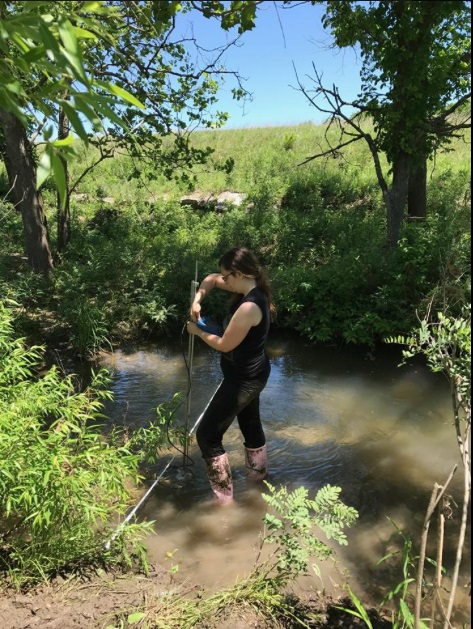Graduate Students
Main Content
Kasey Fralick

fralickk@siu.edu
Advisor: Dr. Matt Whiles
Variation in Prairie Headwater Stream Ecosystem Structure Across a Broad Geographical Gradient
The North American prairie is a highly endangered ecosystem. The streams in these ecosystems are especially threatened, due to channelization, destruction of prairie riparian zones, increased nutrient loading, groundwater depletion, and climate change, among other threats. Grassland headwater streams differ from forested headwaters in the degree to which nutrient inputs are allochthonous and autochthonous, leading to differences in biological communities between forest and grassland streams. Prairie headwater streams provide many ecosystem services, including nutrient processing and retention, dietary subsidies for terrestrial organisms, and habitat for spawning fish and headwater specialists. Still, prairie streams have been studied far less than forested ones, and most of the research on prairie streams has been conducted at the Konza Prairie Biological Station, a tallgrass LTER site in the Flint Hills ecoregion. The purpose of my research is to determine the degree to which several metrics of ecosystem structure and function vary among prairie headwater streams that exist across a broad geographical gradient. I am comparing 13 different prairie streams, spanning across shortgrass, mixed-grass, and tallgrass prairie ecosystems and several different ecoregions. I am especially interested in determining how environmental factors that vary geographically affect invertebrate community structure and the composition of basal resources. This research will help increase our understanding of prairie stream ecosystems, and improve our ability to manage and conserve them.



